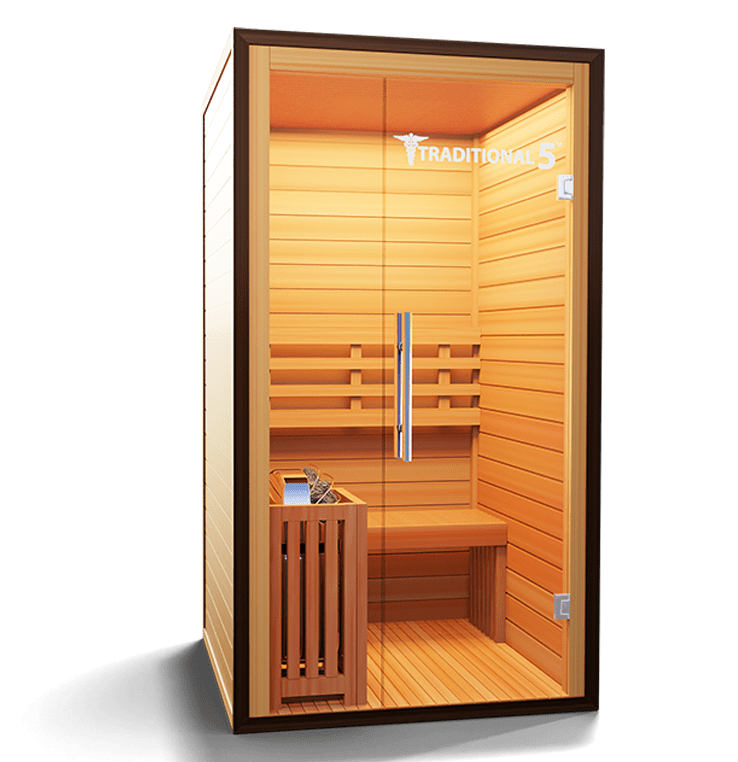The 30-Second Trick For Traditional Sauna
The 30-Second Trick For Traditional Sauna
Blog Article
The 20-Second Trick For Traditional Sauna
Table of ContentsThe 25-Second Trick For Traditional SaunaUnknown Facts About Traditional SaunaWhat Does Traditional Sauna Do?Some Known Factual Statements About Traditional Sauna About Traditional Sauna
Many of the weight lost in a sauna is water loss and is re-gained upon rehydrating. Without an uncertainty sauna can be a vital component of a healthy weight loss program. To consider the differences in between traditional and IR saunas, I will separate these into verifiable, theoretical, and produced differences.Thus, the most popular point in the saunawhich goes to the ceiling directly above the sauna heateris typically in between 185 and 190 F. Claims that a conventional sauna surpasses 200 F is just not true and not suitable for electrical saunas marketed in the United States. The temperature level for a far-infrared sauna is normally established between 120 and 140 F; nevertheless, unlike the conventional sauna, the goal in and IR room is not to achieve a high temperature.

When a conventional sauna has been properly warmed, the sauna walls are cozy, the air temperature has achieved set temperature and the rocks are very heated. As an intriguing side note, the heated wall surfaces and the rocks are sending out far-infrared warm, combined with the warmed air, to create an "covering warmth".
Traditional Sauna Fundamentals Explained
When the high temperature is accomplished, the elements cycle on and off to preserve the heat. A lot of traditional sauna individuals enjoy pouring water over the rocks to develop steam to increase sauna moisture levels. The benefits of pouring water over the rocks consist of: making the room much more comfortable, dampening the nasal flows, and permitting the usage of aromatherapy by mixing essential oils with the water.

When the energy enters the body, it causes the body temperature to increase and ultimately results in perspiration. In an infrared sauna it's important for the emitters/heaters try here to remain on almost continuously. Because there is no mass of rocks to keep warm, the sauna will cool down if the like this emitters turned off.
The 10-Second Trick For Traditional Sauna
As stated over, the sauna bather in an infrared space desires to position himself before running emitters to get optimal gain from the heat. The home heating time for both areas can be extremely different, relying on exactly how the rooms are made use of. For a standard sauna, a bather ought to permit 30-40 minutes for the room to attain a preferred temperature level and to effectively pre-heat the rocks.

A well built sauna will usually achieve a temperature of 150-160 F in about 30-40 mins. For hotter temperature levels, the space might require to warmth for a longer duration.
To some, 15 mins was "squandered" while the infrared energy heated the wood panels as opposed to heating up a body, while others find a pre-heated room to be more comfortable and think a raised beginning temperature is needed to start sweating. The size of advised usage for each and every area is approximately the same (10-15 minutes per session); nevertheless, because of the reduced air temperatures and the capability to feel the impacts of infrared heat faster than a standard sauna, it is not uncommon for a person to spend a total of 20-30 mins in an infrared sauna.
Some Ideas on Traditional Sauna You Need To Know

The ordinary cost per kWH of power in the U.S. is around $0.11, so a 4.5 kW heater will certainly set you back approximately $.50 to compete one hour, if the heater runs constantly for one hour. Typically a sauna heating unit will certainly run for 75% of the very first hour and 50% of succeeding hours on since the aspects cycle once the established temperature is accomplished.
A 2 person far-infrared space is generally physically smaller than a typical sauna, typically concerning 4' x 4' or smaller. The IR heater is typically 1.5-1.7 kW making use of a 120 volt 15 amp plug-in service. Considering that the room can be utilized sooner than a sauna room, we will certainly presume the area is made use of for to of an hour consisting of warm up time.
Finally, there is a seldom gone over distinction in the social experience between both spaces. While our society has actually shed several of the social advantage of the typical sauna experience, it can be really socially fulfilling (Traditional Sauna). From family members time in the sauna, to heart-felt discussions with significant others, to sauna partiesthe conventional sauna experience can cause intimate interacting socially
Traditional Sauna Things To Know Before You Buy
The majority of higher end infrared rooms include colored light therapy, audio systems and full-glass fronts.
Report this page